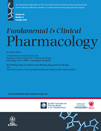Editorial: Sudden cardiac death – the challenge to cardiology
Themed series on ‘Sudden Cardiac Death – Cardiovascular Therapy’ Meeting June 18–19, 2009 Copenhagen, Denmark
Sudden cardiac death (SCD) is generally defined as death from heart disease within 1 h. Often ventricular fibrillation and asystole are involved. Whereas the majority of the cases are associated with coronary artery disease (CAD), a small part occurs in genetic abnormalities such as myocardial ion channel diseases and hypertrophic cardiomyopathy [1,2]. Conceptually, SCD can be viewed as emerging from a complex interplay of substrate and triggers. Under this scenario, structural abnormalities provide substrates, which subsequently set the stage for various transient functional perturbations (triggers) such as ischemia, autonomic changes, physical exertion, and disturbances in cellular environment, to promote malignant arrhythmia that may culminate in SCD.
Unfortunately, there are no valid figures available for SCD worldwide. Although definition and incidence of SCD may vary, an estimate is however, that each year not les than 3 million people worldwide suffer SCD. But perhaps the figure is even much higher. Whereas SCD may be deemed acceptable at high age and in terminal disease, SCD at young age is never acceptable. An estimate is that each year of the magnitude ½ million people <50 years of age worldwide suffer SCD. Great progress has over the last decades been achieved in treatment of CAD, heart failure and arrhythmia – but a fundamental break through against SCD is lacking. Thus, to fight SCD must be considered the present major challenge to scientists and clinicians working with heart disease.
The interrelationship between SCD and CAD is intimate: Autopsy studies have shown that CAD is present in the majority of patients with SCD; and SCD is one of the main drivers of mortality in patients with CAD [3,4]. In many cases SCD is the initial and only manifestation of CAD [5]. In the Framingham study, 52% of all SCDs occurred in subjects with CAD [6]. In patients with CAD, the interaction of trigger and substrate is manifested in two common patterns: Ventricular tachyarrhythmia initiated by acute myocardial ischemia, and pre-existing myocardial scars sparking reentry circuits eventually progressing to fatal arrhythmia without ongoing myocardial ischemia [7].
At population level risk factors for SCD mirror those for CAD: Increasing age, male gender, increased LDL cholesterol, hypertension, smoking and diabetes mellitus [8,9]. Several studies have addressed the question of whether some risk factors are more powerful predictors of SCD as opposed to non-SCD. Smoking, heavy alcohol consumption and increased heart rate have all been suggested to be predictors of SCD [8,10]. However, well-defined clusters of risk factors specifically predicting SCD in the general population have yet to be established.
In treatment of CAD and heart failure the survival benefit conferred by aspirin, statins, beta-adrenoceptor-antagonists, angiotensin-converting enzyme (ACE)-inhibitors, and aldosterone inhibitors are partially mediated through a reduction of SCD [11–14]. Antiarrhythmic drugs can be used to prevent ventricular tachycardia and SCD. However, their use in chronic therapy is problematic due to proarrhythmia and other side effects [14]. Implantable cardioverter-defibrillators (ICD) prevent SCD in patients with impaired left-ventricular ejection fraction in both primary and secondary prophylaxis [15,16]. However, they do not prevent ventricular tachycardia.
Targeting SCD with novel devices and pharmacological interventions in high-risk populations has an intuitive appeal and fits well with contemporary concepts of individualized medicine. However, strategies to limit SCD must also recognize that the majority of events occur in the large pool of low-risk subjects. This “preventive paradox” [16] suggests that in addition to specific interdictions in high-risk subgroups, we need to deal with the challenge of SCD in a broader and more comprehensive fashion. A crucial part of such a multifaceted approach is identification and aggressive treatment of risk factors at an early and pre-symptomatic stage [17]. This important point is underscored by a recently published study, which found that traditional risk factors for CAD were both prevalent and under-treated in patients who had suffered SCD [4].
Hitherto major progress in understanding the mechanisms of SCD has mainly been seen within genetic heart diseases such as myocardial ion channel diseases and hyperthrophic cardiomyopathy. This new knowledge is of major importance for prevention of SCD in children and young people. Here SCD may be caused by a defect in an ion channel [18], having been silent for years, suddenly becoming fatal due to disturbance of the cellular environment caused by e.g. hypokalemia or treatment with drugs that inexpediently affect cardiac repolarisation – as seen in e.g. inherited long QT-syndrome (LQTS) – inducing ventricular tachycardia, ventricular fibrillation and SCD. Sudden infant death syndrome may be the fist indication of LQTS in a family [19]. Also familial hypertrophic cardiomyopathy is associated with a high occurrence of SCD at young age [20]. A genetic diagnosis in arrhythmia is at present not of major importance for the patient, since therapy is based on the clinical manifestations. However, screening for genetic heart disease may be relevant in first degree relatives to victims of SCD. Screening may also prove beneficial prior to the use of any drug that may dangerously affect cardiac repolarisation. Moreover, treatments with ion-channel modulating drugs may gain benefit. Recognizing the developing knowledge of plasma potassium dynamics [21] and that hypokalemia is insufficiently handled in many hospitalized patients [22], it may also prove beneficial to maintain plasma potassium levels in the upper normal range [23–26].
An estimate is that genetic abnormality that may cause SCD worldwide afflicts millions of people. In addition it may worldwide be relevant to screen for such abnormalities in millions of relatives to SCD victims. Although the number of SCD caused by genetic abnormalities may still be considered relatively small, it is probably from integration of genetic and mechanistic research and clinical trials that a fundamental brake through against arrhythmia and SCD should be expected. In the present issue of Fundamental and Clinical Pharmacology a number of reviews discuss such possibilities.
Conflict of interest
None declared.




